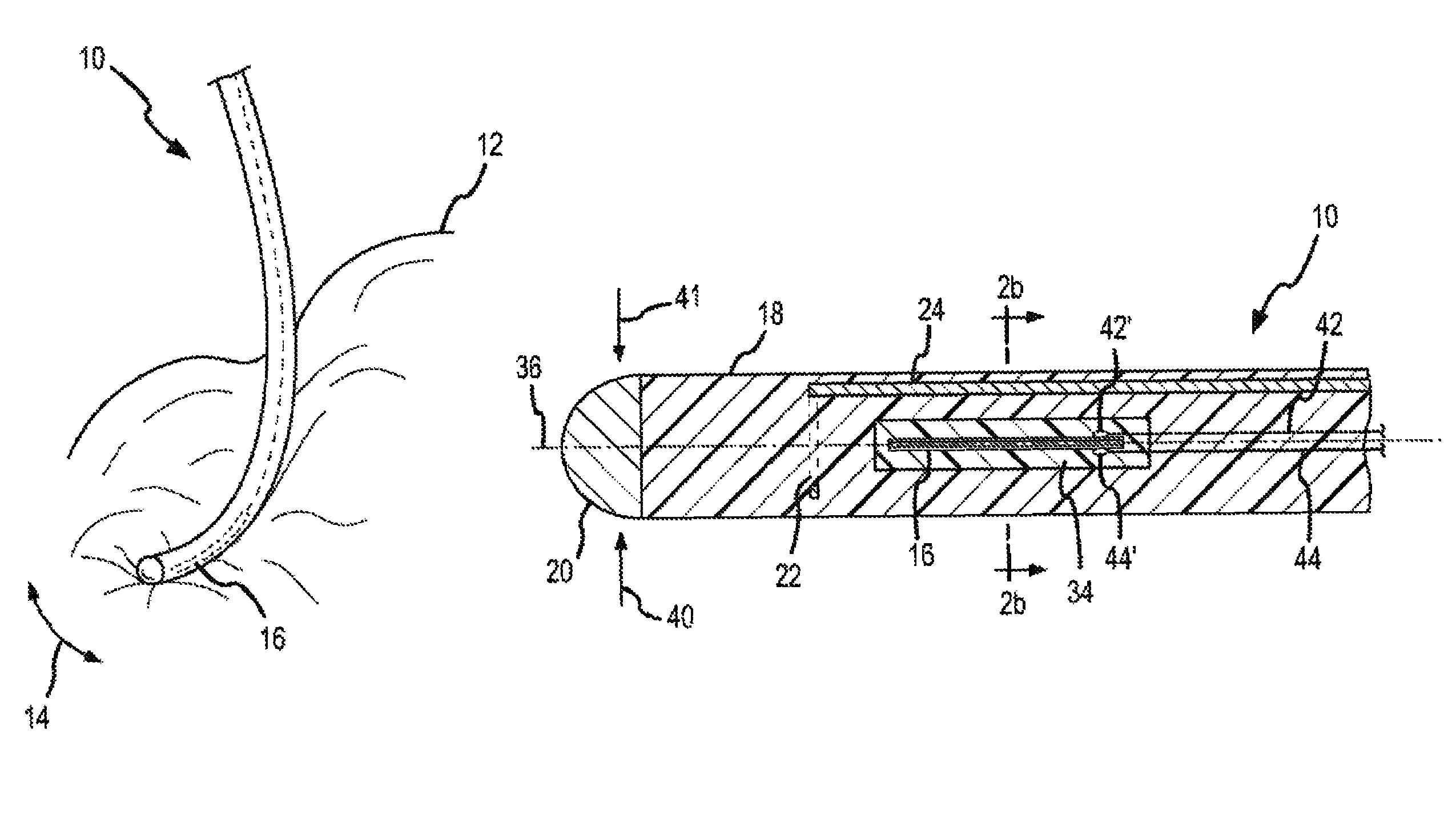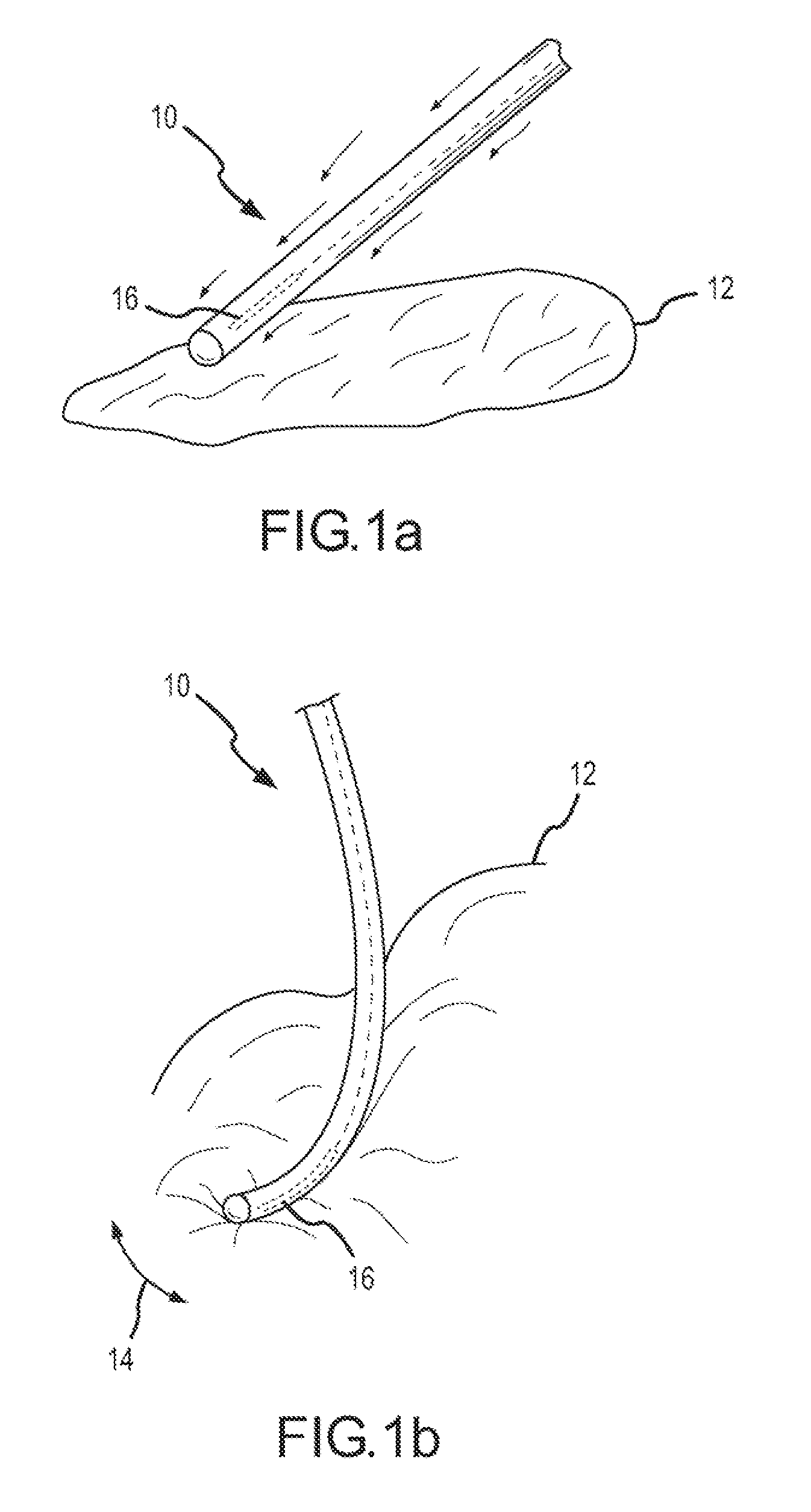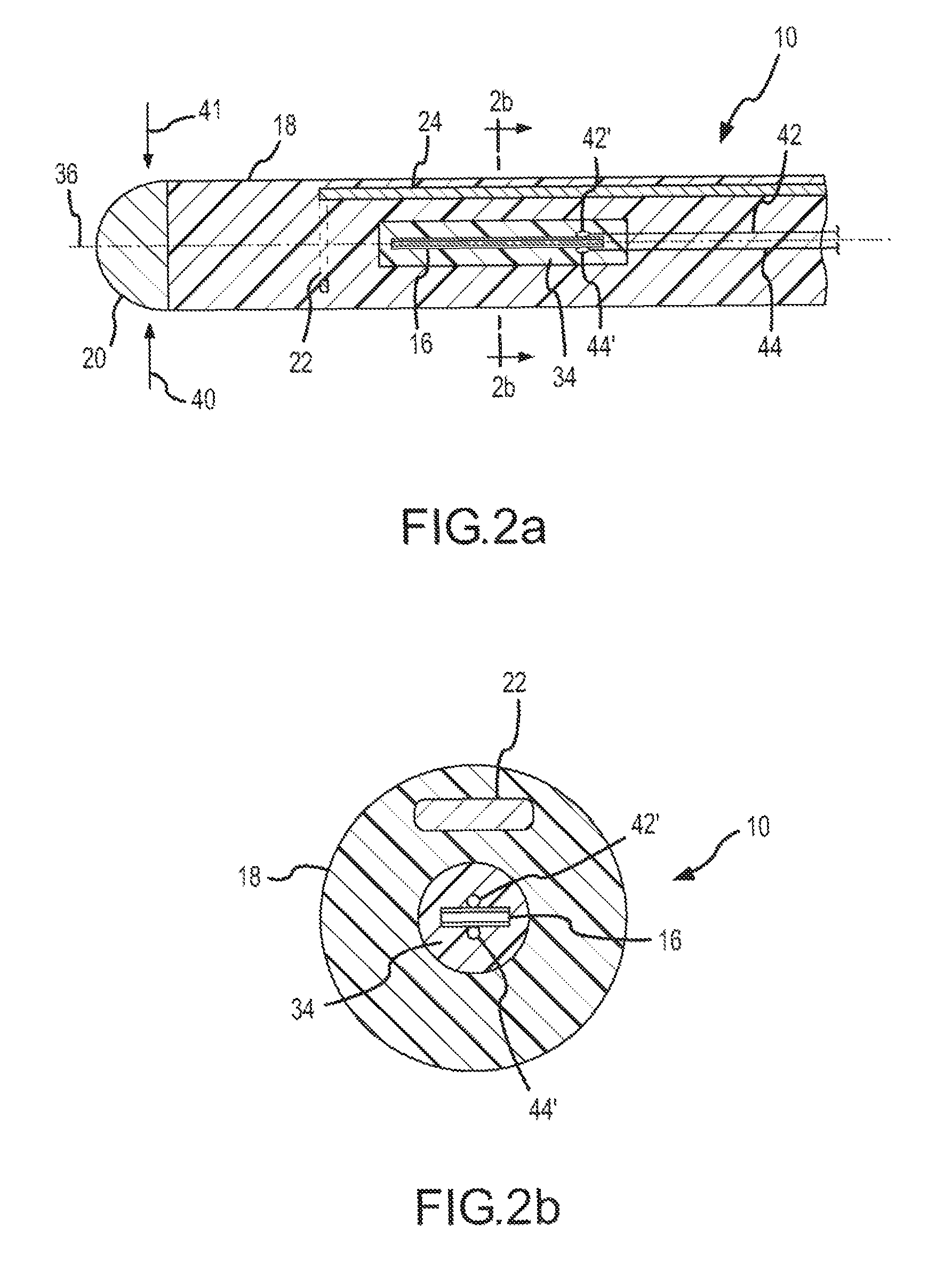Dynamic contact assessment for electrode catheters
a technology of electrode catheters and dynamic contact, which is applied in the field of electrode catheters, can solve the problems of difficult to determine the contact between electrodes and tissue using conventional fluoroscopy techniques, and the ablation electrode is the way to assess tissue contact, so as to increase the contact pressure and reduce the contact pressure
- Summary
- Abstract
- Description
- Claims
- Application Information
AI Technical Summary
Benefits of technology
Problems solved by technology
Method used
Image
Examples
Embodiment Construction
[0029]Exemplary embodiments of a tissue ablation system and methods of use to assess dynamic contact between an electrode catheter and a moving tissue are depicted in the figures. Exemplary systems comprise an electrode catheter which may be inserted into the patient e.g., for forming ablative lesions inside the patient's heart. During an exemplary ablation procedure, a user (e.g., the patient's physician or a technician) may insert the catheter into one of the patient's blood vessels, e.g., through the leg or the patient's neck. The user, guided by a real-time fluoroscopy imaging device, moves the catheter into the patient's heart.
[0030]When the catheter reaches the patient's heart, electrodes at the distal portion of the catheter may be implemented to electrically map the myocardium (i.e., muscular tissue in the heart wall) and locate a target tissue. After locating the target tissue, the user must move the catheter into contact with the target tissue before applying ablative ener...
PUM
 Login to View More
Login to View More Abstract
Description
Claims
Application Information
 Login to View More
Login to View More - R&D
- Intellectual Property
- Life Sciences
- Materials
- Tech Scout
- Unparalleled Data Quality
- Higher Quality Content
- 60% Fewer Hallucinations
Browse by: Latest US Patents, China's latest patents, Technical Efficacy Thesaurus, Application Domain, Technology Topic, Popular Technical Reports.
© 2025 PatSnap. All rights reserved.Legal|Privacy policy|Modern Slavery Act Transparency Statement|Sitemap|About US| Contact US: help@patsnap.com



